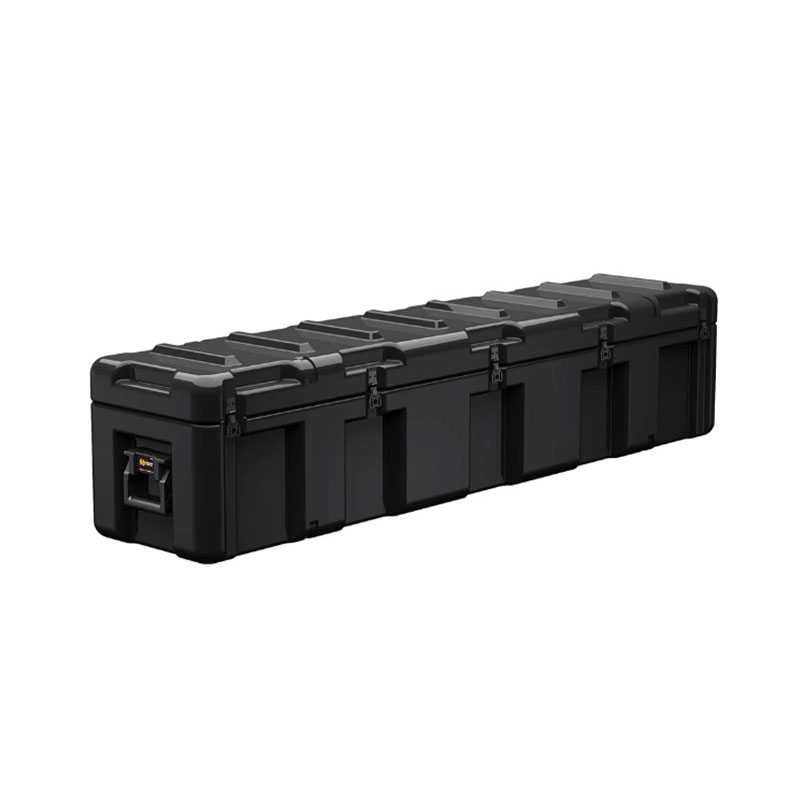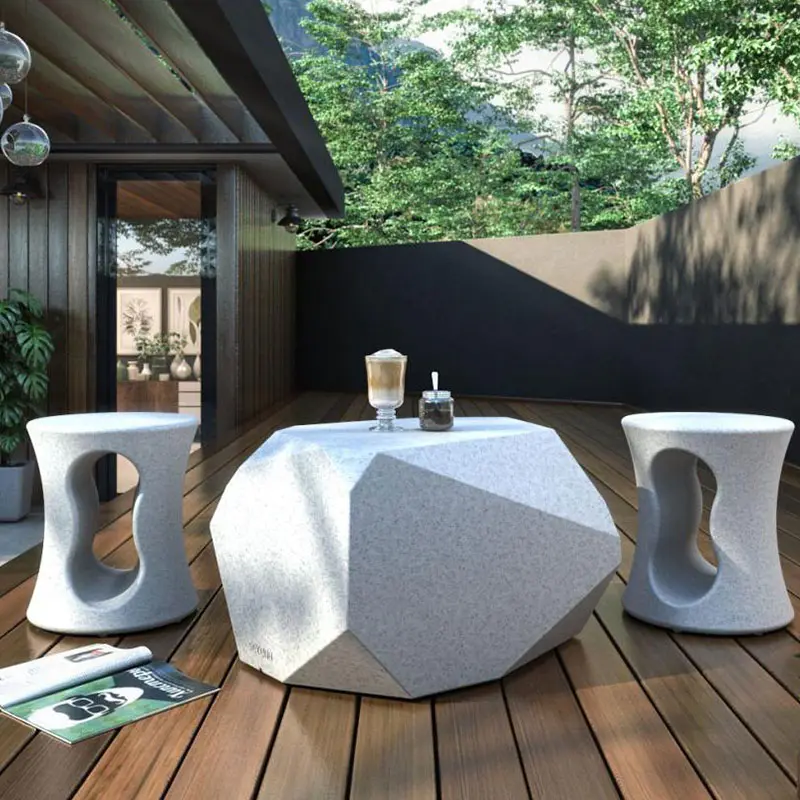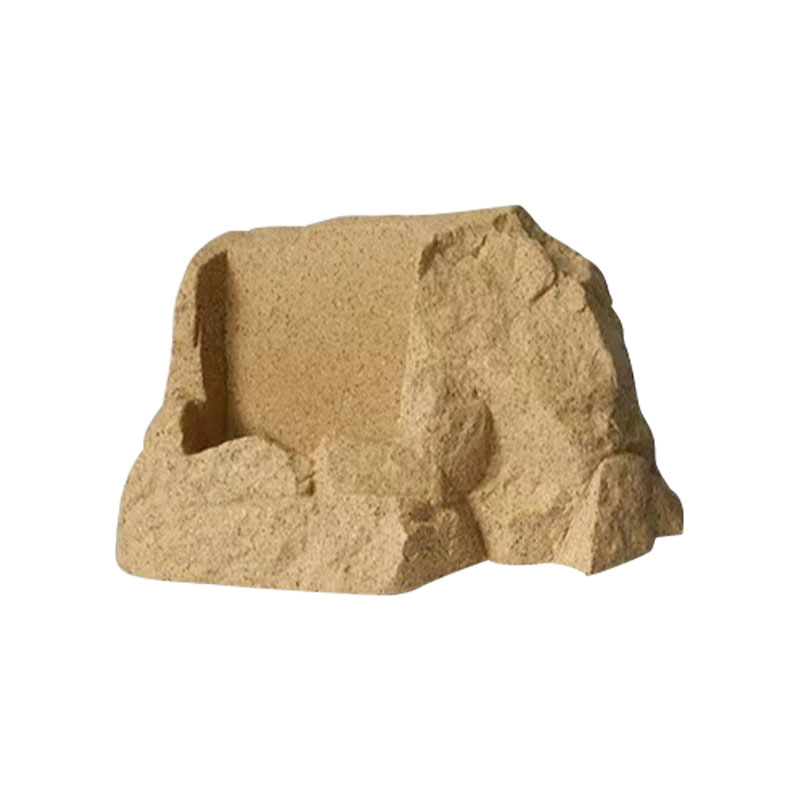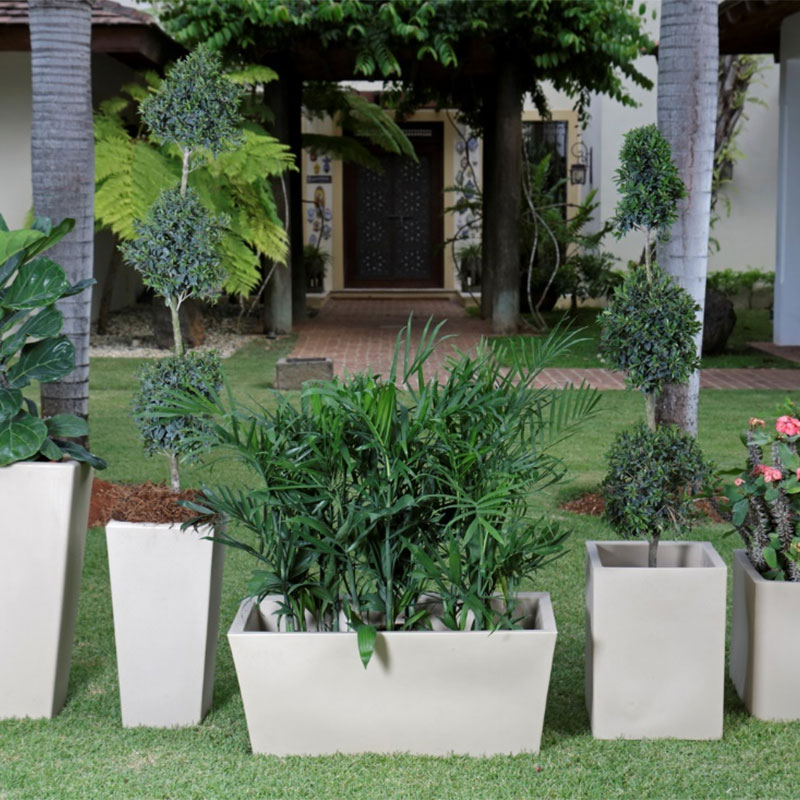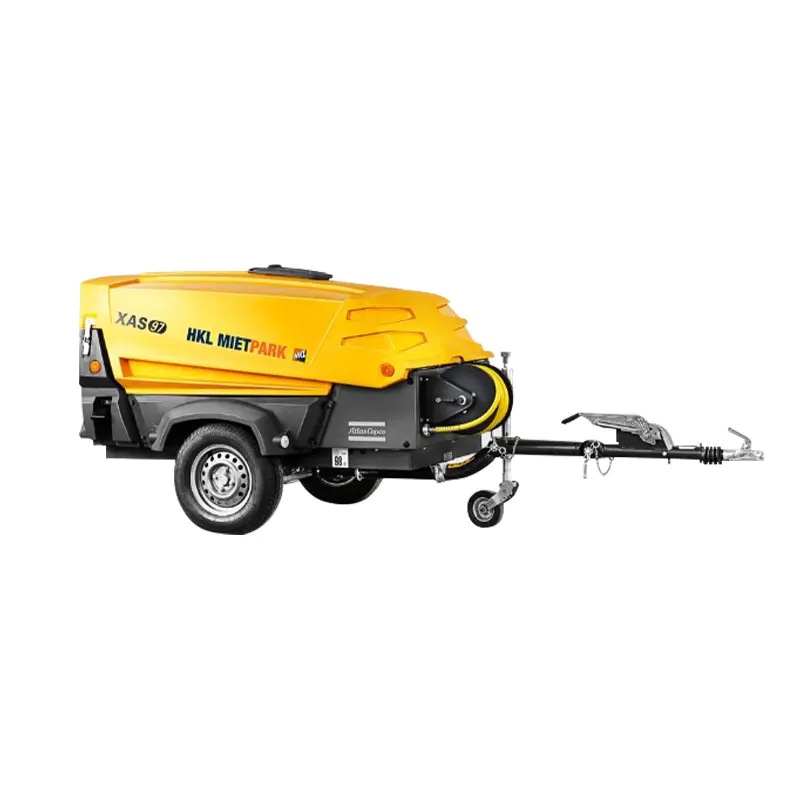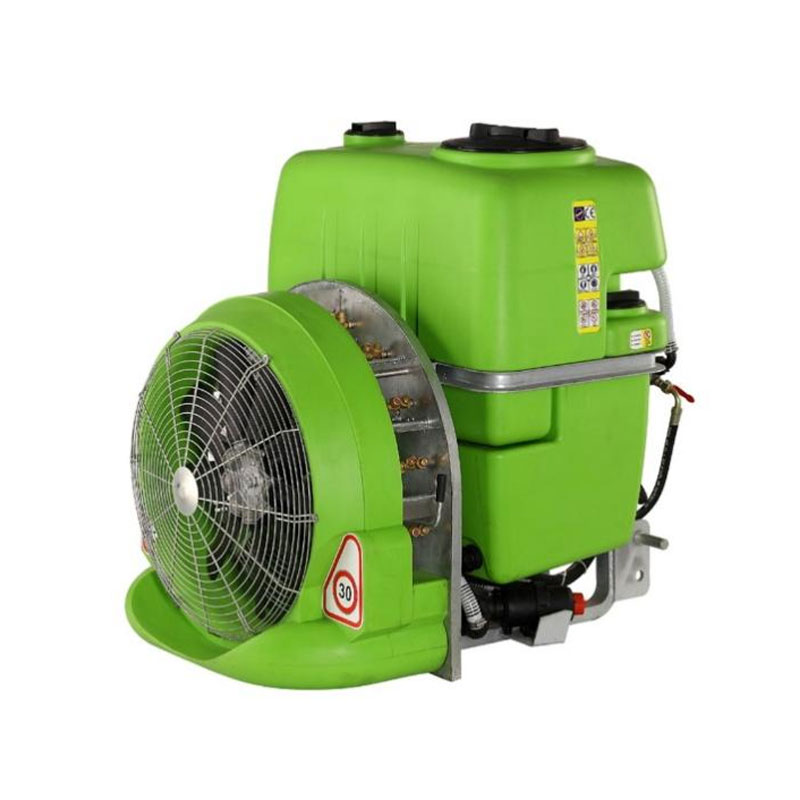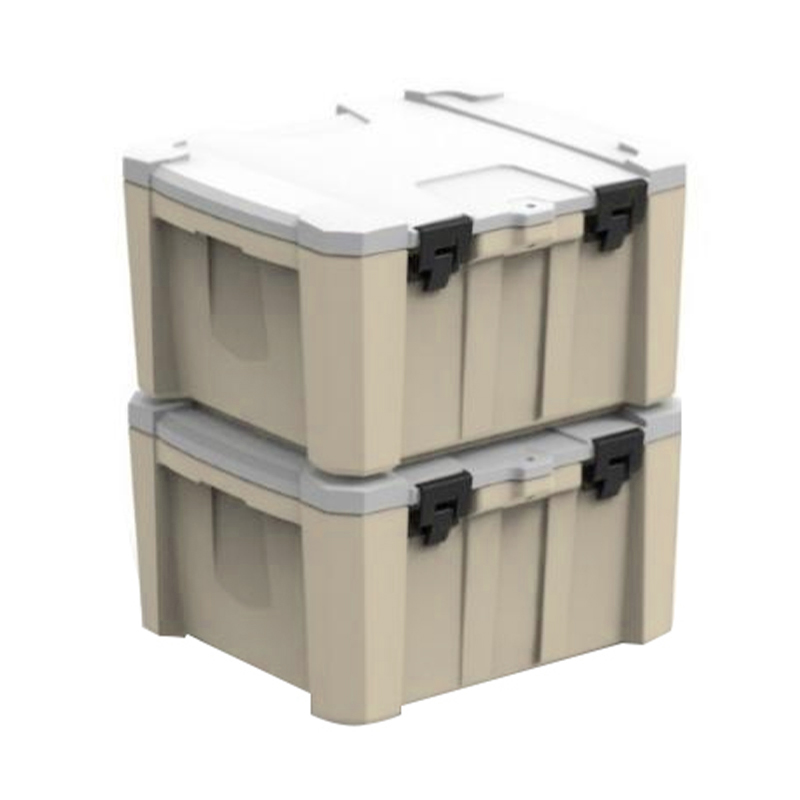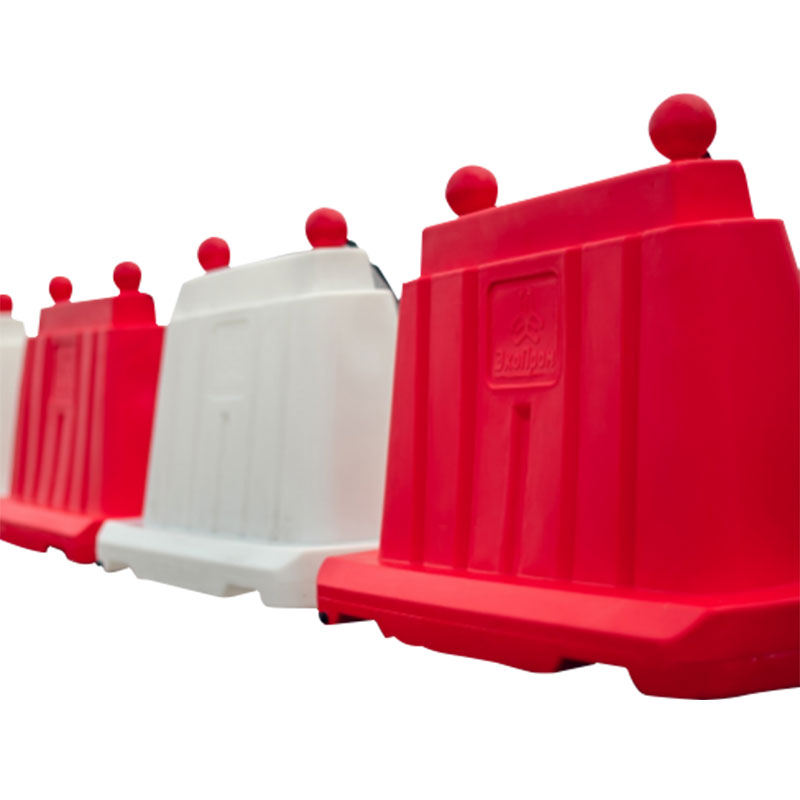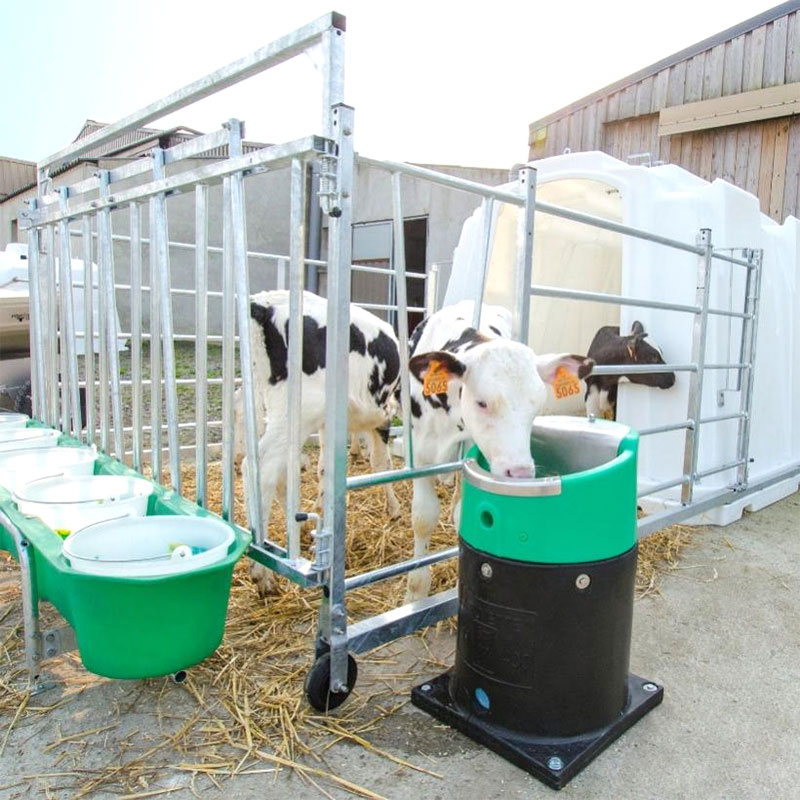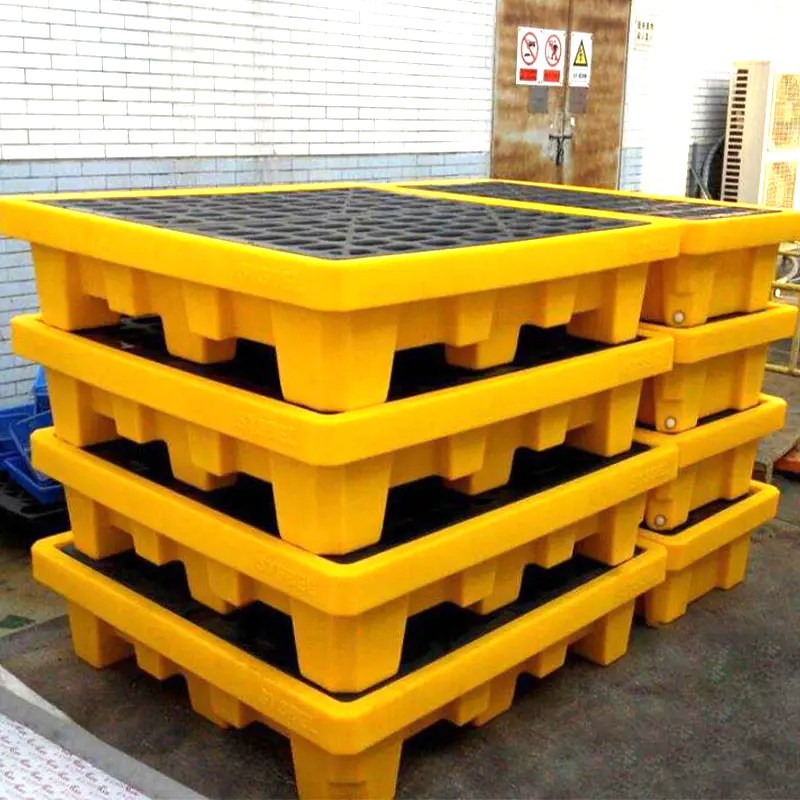In the world of modern horticulture and garden design, the choice of container is as crucial as the selection of plants themselves. Among the various manufacturing methods, flowerpot gardening rotational mold has emerged as a leading process for producing high-quality, durable planters. These rotomolded pots are distinguished not only by their structural integrity but also by their characteristically sophisticated textured finish. This surface quality is far from a simple afterthought; it is an integral outcome of the manufacturing process that delivers significant benefits.
The Foundation: Understanding the Rotational Molding Process and Texture Formation
To fully appreciate the textured finish, one must first understand its genesis within the rotational molding process. Unlike injection molding or thermoforming, which often produce a glossy, perfectly smooth surface, rotational molding involves a unique set of steps that naturally lend themselves to creating a more organic finish.
The process begins with a precise amount of polyethylene or other polyolefin powder, known as plastic resin for planters, being placed into a hollow mold. The mold is then closed and rotated biaxially (simultaneously around two perpendicular axes) inside an oven. As the mold rotates, the heat causes the plastic powder to gradually melt and adhere evenly to the inner walls of the mold cavity. This slow, gentle fusion of material is critical. It does not involve high-pressure injection, which can force plastic into a mirror-like surface. Instead, the powder sinters and coalesces, taking on the minute characteristics of the mold’s interior surface.
The texture is, therefore, a direct imprint of the mold itself. Manufacturers can meticulously engineer mold surfaces to achieve specific textures. A mold with a finely grit-blasted interior will produce a low-profile, stone-like feel. Conversely, a mold etched with deeper, more pronounced patterns can replicate the rough-hewn appearance of weathered wood, aged terra cotta, or natural stone. This capability for custom rotomold finishes is a significant advantage, allowing for a diverse product portfolio from a single manufacturing technique. The resulting finish is not a coating or a laminate that can peel or wear off; it is the body of the planter itself, ensuring the texture is permanent and consistent throughout the material’s thickness.
Aesthetic Enhancement: Elevating Garden and Landscape Design
The aesthetic contribution of the textured finish on flowerpot gardening rotational mold products is profound, allowing them to bridge the gap between industrial manufacturing and natural beauty. This enhancement operates on several visual and tactile levels.
Mimicking Natural Materials
One of the primary aesthetic strengths of a rotomolded pot’s texture is its ability to credibly simulate high-end, natural materials. Through advanced mold etching techniques, manufacturers can create surfaces that are visually and tactilely indistinguishable from materials like weathered stone planters, ceramic look planters, and wood grain planters. The micro-shadows cast by the textured surface break up light reflection, eliminating the plastic-like sheen that often detracts from synthetic products. This creates a matte, sophisticated appearance that reads as authentic and premium. A rotomolded pot with a roughened, sand-like finish can provide the rustic, earthy feel of sandstone, while one with a linear grain pattern can perfectly mimic the look of a aged cedar trough, all while offering the durability and lightweight properties that the natural counterparts lack.
Visual Interest and Depth
A textured finish adds depth and complexity to a planter’s appearance. A perfectly smooth surface can appear flat and uninteresting, especially on larger pots. Texture introduces a play of light and shadow that changes throughout the day as the sun moves, giving the planter a dynamic, living quality. This visual interest ensures that the container itself becomes a focal point in the garden or patio, complementing the foliage it holds rather than merely acting as a functional vessel. This characteristic is highly valued in commercial landscaping durability projects, where creating an inviting and aesthetically pleasing environment is paramount.
Concealing Wear and Tear
From an aesthetic maintenance perspective, the textured finish is exceptionally practical. Smooth, glossy planters readily show scratches, water spots, mineral deposits from fertilizer, and dirt. The textured surface of a flowerpot gardening rotational mold pot effectively camouflages these minor imperfections. Scratches blend into the existing pattern, and dust or water spots are far less noticeable. This means the planters maintain their “like-new” appearance for a longer period with less frequent cleaning, a key selling point for both end consumers and large-scale landscape management companies.
The following table summarizes the key aesthetic benefits of the textured finish:
| Aesthetic Benefit | Description | Ideal Application |
|---|---|---|
| Natural Material Simulation | Credibly replicates the look and feel of stone, wood, or ceramic through detailed mold etching. | High-end residential gardens, boutique commercial spaces, thematic landscapes. |
| Enhanced Visual Depth | Creates light and shadow play, adding dynamic interest and preventing a flat, artificial appearance. | Large statement planters, public art installations, modern architectural settings. |
| Imperfection Camouflage | Hides minor scratches, water spots, and dirt, maintaining a consistently presentable look. | High-traffic public areas, rental properties, and for consumers seeking low-maintenance beauty. |
Functional Superiority: The Practical Advantages of a Textured Surface
While the aesthetic appeal is immediately apparent, the functional benefits of the textured finish are what truly solidify the value of flowerpot gardening rotational mold planters. These advantages directly impact plant health, pot longevity, and user safety.
Improved Gripping and Handling
The texturing on a rotomolded planter provides a significantly superior grip compared to a smooth, slick surface. This is a critical functional feature, especially for larger pots. When a planter is filled with wet soil and a mature plant, it can be extremely heavy and difficult to maneuver. A smooth surface becomes slippery, particularly if damp, increasing the risk of dropping and damaging the pot or plant, or causing personal injury. The textured finish acts like a non-slip surface, giving the user a firm, secure hold. This improved grip for large planters makes transportation, repositioning, and general handling much safer and easier, a feature appreciated by nursery staff, landscapers, and home gardeners alike.
Enhanced Durability and Scratch Resistance
As alluded to in the aesthetic section, the texture contributes directly to the planter’s durability. The surface pattern inherently disguises minor abrasions that occur during normal use, shipping, and storage. However, its benefits go beyond mere concealment. The matte, textured surface is generally more resistant to showing scratches in the first place because it lacks a high-gloss finish that would clearly highlight any surface breach. This resilience is essential for wholesale nursery pots that are handled frequently and for planters used in public spaces where incidental contact is inevitable. This leads to a lower rate of product damage and returns, enhancing the value for buyers and wholesalers.
Superior Insulation Properties
The flowerpot gardening rotational mold process creates a thick, single-piece wall with no seams. The textured surface, with its increased surface area, contributes to effective insulation for the plant’s root system. The air pockets within the texture and the thick-walled nature of the pot itself create a buffer against rapid temperature fluctuations. In hot climates, this helps keep the soil cooler, preventing roots from baking. In colder climates, it provides a degree of protection against frost, slowing the rate at which the soil freezes. This temperature regulation is a significant functional benefit for plant health, promoting stronger root growth and reducing heat and cold stress. While not a substitute for a dedicated insulating pot, it offers a marked improvement over thin-walled, smooth containers.
Optimal Drainage and Aeration Compatibility
While the texture itself does not create drainage holes, the nature of the material used in flowerpot gardening rotational mold products makes them easy to drill without cracking. The textured surface around the drainage area can help prevent soil from sealing the hole against the ground or saucer, promoting better water flow. Furthermore, the slightly porous nature of the textured surface, compared to a completely impervious gloss, allows for minimal gas exchange through the pot walls. This facilitates a small degree of aeration, which can help prevent soil from becoming completely anaerobic, thus contributing to a healthier root environment. This aligns with the demand for lightweight durable planters that also support robust plant health.
The Buyer’s Perspective: Value Proposition and Market Differentiation
For wholesalers and buyers in the garden supply industry, the textured finish of flowerpot gardening rotational mold planters is not just a feature; it is a central component of the product’s value proposition and a key tool for market differentiation.
Meeting Consumer Demand for Authenticity: Today’s consumers are increasingly seeking garden products that offer a natural, authentic look without the maintenance or cost associated with natural materials. The ability of a rotomolded pot to provide the aesthetic of stone or wood at a fraction of the weight and cost is a powerful market advantage. When marketing these products, highlighting the authentic look and feel achieved through the textured finish directly addresses this consumer desire.
Reducing Logistics and Merchandising Costs: The functional durability afforded by the textured finish has tangible business benefits. Its ability to resist and conceal scratches means fewer products are damaged in transit or on the sales floor. This leads to a reduction in shrink and costly returns. Furthermore, the non-slip handling feature reduces the risk of workplace accidents for staff handling heavy inventory, from the warehouse to the garden center.
Creating a Cohesive Product Line: The flowerpot gardening rotational mold process allows for tremendous design flexibility. A manufacturer can offer a range of textures—from fine to coarse, from stone to wood-grain—across various pot sizes and shapes, creating a cohesive and scalable collection. This allows buyers to source an entire line of complementary planters from a single supplier, simplifying procurement and enabling them to offer curated solutions to their landscaping and retail customers.
Conclusion
The textured finish on a flowerpot gardening rotational mold planter is a quintessential example of form and function in perfect synergy. It is not a superficial layer but an inherent characteristic born from a unique manufacturing process. As we have explored, this texture profoundly enhances the product’s appeal by delivering an authentic, high-end aesthetic that mimics natural materials, adds visual depth, and cleverly conceals the inevitable signs of use. Simultaneously, it provides critical functional benefits including improved grip and safety, enhanced durability, better thermal insulation for roots, and support for a healthy growing environment.
For industry professionals, recognizing the textured finish as a key value driver is essential. It is a feature that resonates with end consumers seeking beauty and practicality, while also delivering tangible business benefits through reduced damage and improved handling. The flowerpot gardening rotational mold process, with its capacity for producing this superior textured finish, continues to set a high standard in the planter market, proving that a container’s surface is fundamental to its overall success.

 English
English 中文简体
中文简体 русский
русский Español
Español